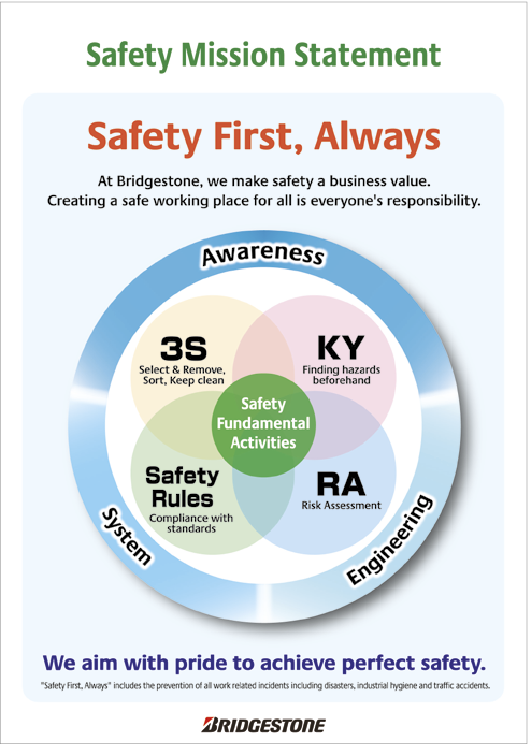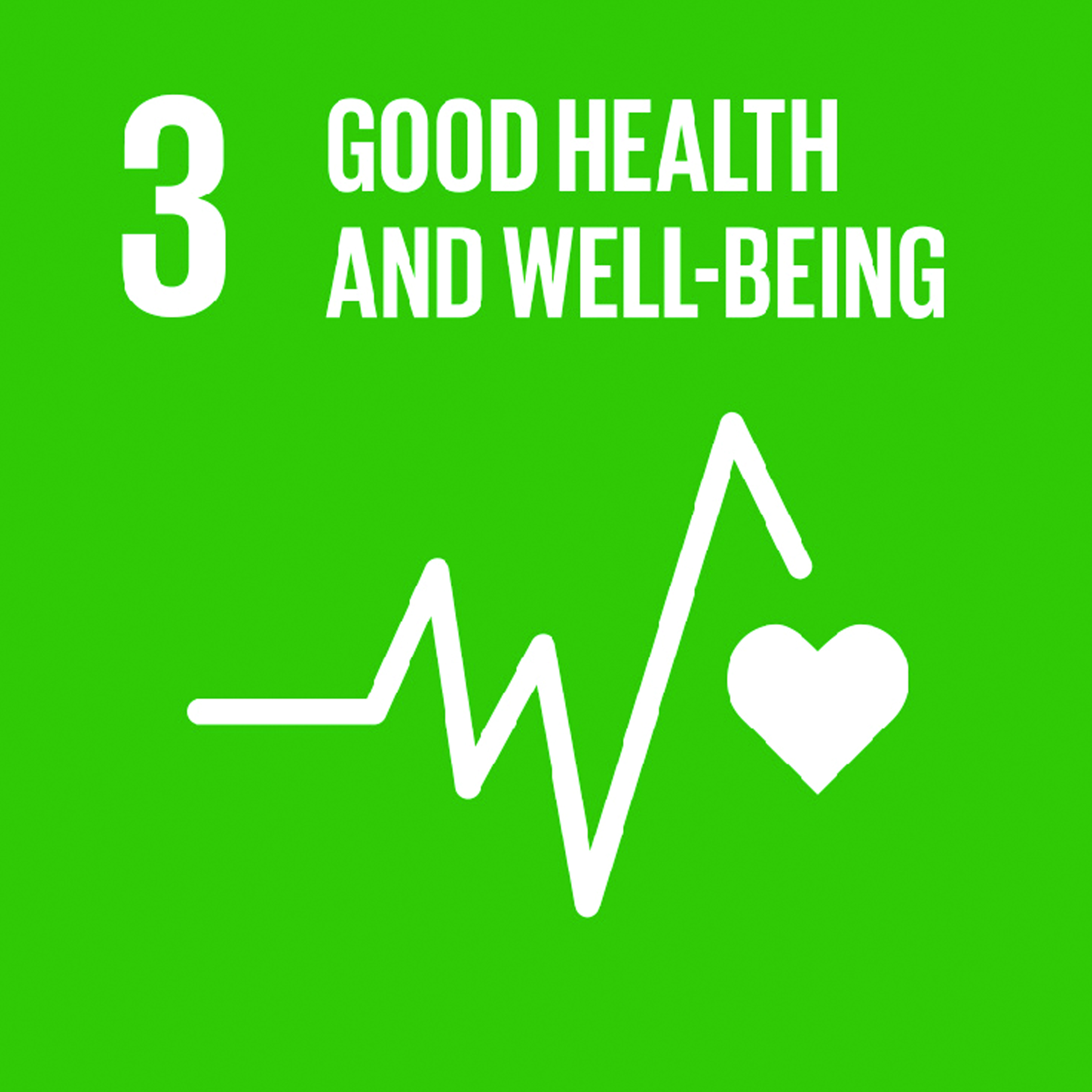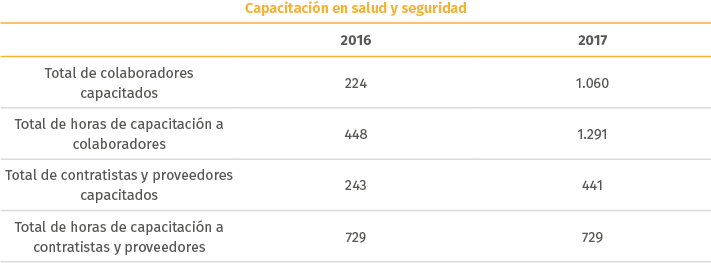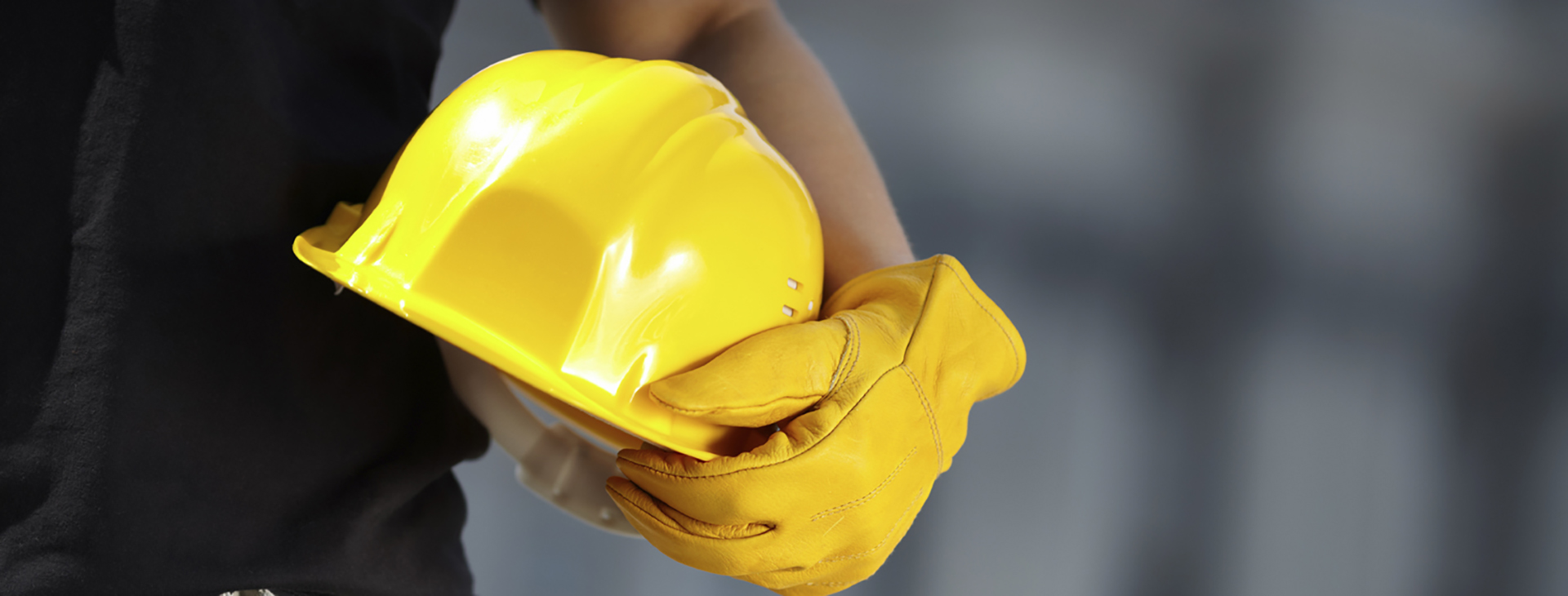The Bridgestone Safety Mission seeks to promote the health and safety of all employees, in compliance with the law and the bylaws established for each work center.
The company has a variety of mechanisms that it utilizes to guarantee that the operation at each Bridgestone work center complies with the highest standards of safety. These include different committees that support risk management and evaluation activities, as well as training, events, drills, and even initiatives that involve the employees’ family members, thus nurturing a culture of safety at all levels, both inside and outside of the workplace.


Through medical care and the promotion of a healthy life style. Bridgestone Costa Rica contributes to the achievement of the SDG 3: Ensure healthy lives and promote well-being for all at all ages.
Health and Safety Committee
Bridgestone Costa Rica has a Health and Safety Committee that serves as a key management mechanism for these issues that are fundamental to the organization.
The committee has eight members and its main objectives include promoting safety guidance and instruction, informing employees about the factors that produce risks, ensuring regulatory compliance with occupational health issues, and preparing activities that contribute to meeting these goals.
The Bridgestone Costa Rica Health and Safety Committee carried out the following activities in 2017:
• It conducted on-site training on the hazards of work-related tasks.
• It met to analyze the risks of the machines operated in the plant, and reduce the unsafe behavior.
• It organized safety tours to determine the conditions that could be improved in the facilities.
• It gathered representatives from all levels of the organization to identify security risks in each department and area.
• It followed up on corrective actions to prevent accident recurrences.
• CIt conducted campaigns to identify and reduce mosquito breeding sites, both within the plant and in the employees’ homes.
Bridgestone Costa Rica obtained positive results from these activities conducted by the Health and Safety Committee. Only 10 accidents were reported in the Belén Plant in 2017. The company reported 391 working days lost, while the absenteeism rate stood at 2.5%.

Control and Monitoring Programs
Reinforcing the fundamentals of the employees’ protection and safety is a top priority at Bridgestone Costa Rica. Therefore, the company is aligned with internal and external standards and regulations, and engages in major prevention and awareness activities through initiatives that promote a safe work environment.
Bridgestone Costa Rica has implemented the following initiatives and programs in this area:
Emergency Action Plan
Bridgestone Costa Rica’s Emergency Action Plan is designed to control, manage, prepare for and respond to emergencies, including earthquakes, fires, chemical spills, gas leaks, food poisoning, bomb threats and plane crashes, among others.
Its main objective is to establish an emergency action plan to respond to the emergencies that Bridgestone Costa Rica could face, including all the related activities to be progressively developed, including conceptualization, principles, benchmarks, organization, risk evaluation, action plans, and monitoring and evaluation activities.
Drills and Brigades
In 2017, the company conducted two general evacuation drills equivalent to 24 hours of training. These drills were aimed at providing feedback to the staff on the measures that must be taken to evacuate the plant.
The drills and emergency response situations would not be possible without the work done by the Bridgestone Costa Rica Brigades, who are trained in fire prevention and combat, evacuation, first aid, cardiopulmonary resuscitation, search and rescue, working at height rescue plans, rescue in confined spaces, chemical product spills, and the handling of bees, among others. Employees are also instructed on how to use fire extinguishers, fire hoses, and the safety simulator.
In 2017, Bridgestone worked closely with local firefighters to inspect the facilities and its firefighting system, and to have them help train the brigades. The firefighters offered valuable suggestions, as experts in their field.
Health and Safety Training
Health and safety training is aimed at all of Bridgestone Costa Rica’s value chain. The hours of training provided ensure that just as the workers and the plant have safety measures, suppliers and contractors receive the necessary information to prevent accidents and care for their health.
In 2017, 1,060 employees received 1,291 hours of training on health and safety issues. All new hires received training through safety induction courses covering topics such as the comprehensive Bridgestone policy, core safety activities, the Emergency Response Plan, evacuation routes, meeting points, and the methods utilized to issue warnings about emergencies. In addition, personnel in general were trained on topics such as lockout-tagout (LOTO) procedures, risk analysis, the inspection of risk conditions in confined spaces, fundamental safety activities, and the use of fire extinguishers.
The company-implemented recertification activities for a variety of topics related to the jobs assigned to the most experienced and senior staff members, as part of the company’s continuous training program. Some re-certifications granted in 2017 include:
• Working at heights
• Lockout-Tagout (LOTO)
• Hot work
• Confined spaces
• Use of industrial vehicles
• Electrical works
In order to strengthen industrial safety within the value chain, Bridgestone Costa Rica delivered 729 hours of training to 441 contractors.
Some of the topics reinforced with these stakeholders included:
• Waste classification and management.
• Safety aspects related to working in confined spaces within the areas that the company has designated for this type of work.
• Lockout-Tagout systems for mechanical, hydraulic, pneumatic, and gas equipment.
• Hot works following all corporate fire prevention procedures.
• Performing work at heights contemplating all areas of the plant while considering the equipment that can be used for this type of work

Refusal to Work
One of the safety initiatives at Bridgestone Costa Rica is a work instruction that allows employees to refuse to work if they believe that conditions are unsafe or that they are inadequate, without fear of reprisals. In this type of situation, the case is immediately evaluated to establish or correct the necessary measures.
Visual Media
In 2017, the company sent accident prevention announcements to all employees and taught them how to act in emergencies caused by both natural and manufactured disasters. Posters were placed on the safety bulletin boards, followed by reminders sent about the importance of identifying chemical substances, and their handling and care.
The entire company also watched the movie about the fire that occurred years ago at the Bridgestone plant in Tochigi, Japan, to raise awareness about the importance of prevention.
